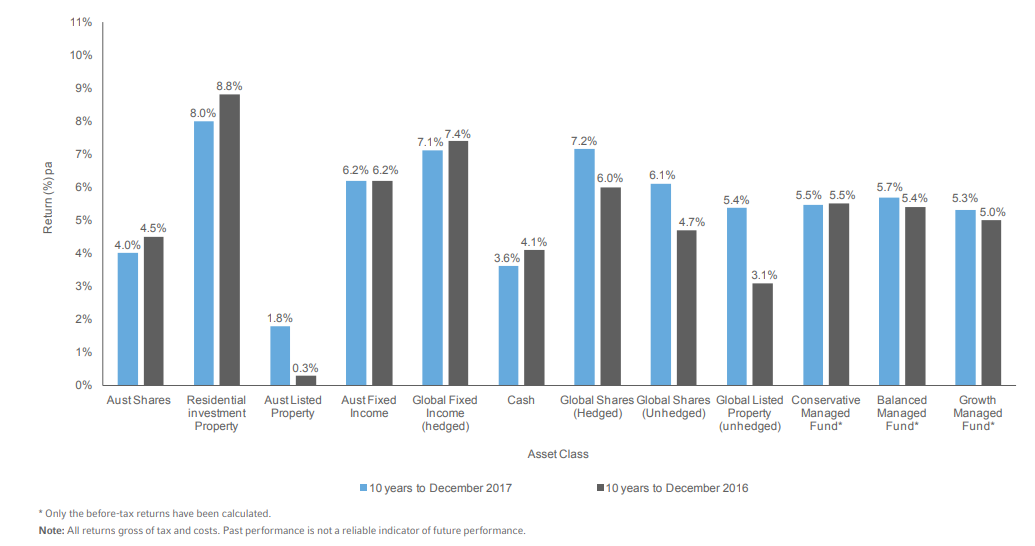We’re looking ahead to another shaky year in the financial markets – an ever-escalating US/China trade war, Brexit uncertainty and a fierce federal election in Australia are just a handful of the major events set to shape local and global markets in 2019.

If ever there was a time that investors should make plans to protect their wealth, it’s now, and with defensive assets increasingly on the radar, there’s no better time to consider bonds.
The global bond market is worth USD15 trillion more than the global share market with American and European investors commonly holding bonds as part of their diversified investment portfolios. Locally, the corporate bond market is over two-thirds the size of the ASX and worth approximately $2.15 trillion*, however investor appetite for bonds is far lower than in the US or Europe.
While the bond market flies under the radar of most Australian investors, leaving them underweight in an asset class that can protect their portfolio in ways that shares and property cannot, the tide has started to turn with investor interest and appetite on the rise.
From low risk government bonds paying around 2%pa, to riskier domestic and foreign currency bonds paying 10%pa or more, there is a broad range of bond options available, which suit most investment goals and offer a crucial element of protection against volatile share markets.
Why buy bonds?
Diversification and certainty are among the chief reasons investors buy bonds. They open up a broad range of investment opportunities by giving investors access to companies not listed on the ASX, such as Australian public private partnerships. They also provide certainty in cash flow – investors know the interest they can expect upfront, when this will be paid and when they can expect their capital to be repaid on maturity.
Bonds can pay fixed or floating interest or can be linked to CPI, providing a valuable hedge against inflation. Fixed rate bonds typically pay half yearly, while floating and CPI linked bonds pay quarterly or monthly interest. This upfront certainty of regular income payments and expected future returns means that investors can tailor their portfolio to meet income needs and plan their cash flow with greater confidence.
What’s more, bonds offer liquidity; investors are not forced to hold bonds until maturity and can trade their investments on an active secondary market.
Perhaps one of the biggest surprises with bonds, is that they can offer investors higher than expected returns when compared with other asset classes such as equities. According to the Russell Investments / ASX Long term Investing Report, Australian bonds have earned 6.2%pa over the last decade to December 2017 compared to Australian shares earning 4%pa.
Gross return comparison – 10 years to December 2017 versus December 2016
 Source: Russell Investments/ASX Long Term Investing Report
Source: Russell Investments/ASX Long Term Investing Report
Bonds carry default risk, however they still typically remain lower-risk investments than shares. While the chance of a company defaulting and being unable to make payment on their debt obligations is relatively low, especially with investment grade bonds, in the event of a company default, bonds rank higher than shares in the capital structure. This means bond investors will receive repayments (where available) ahead of shareholders.
Bringing bonds into your portfolio
Like shares, how you incorporate bonds into your portfolio depends on your individual circumstances – how much you want to invest, your investment goals and your risk appetite. When considering your allocation many follow the wisdom that your percentage allocation to bonds should be approximately equivalent to your age.
There are two chief ways you can invest in bonds – directly and via managed funds and ETFs. If you have over $250,000 to invest you should consider investing directly through a dealer / broker, like FIIG Securities. Investing directly gives you control over which companies you invest in, when you buy and sell bonds, and certainty around when and how much interest will be paid to you.
Less confident or time-poor investors might consider investing in bonds through an individually managed portfolio such as FIIG’s Managed Income Portfolio Service which offers three unique investment programs, designed to appeal to a broad range of investor appetites. Alternative investment options include managed funds or ETFs. Here you choose between a passive fund, which has little to no oversight and aims to meet a benchmark return, or an actively managed fund that is overseen by a fund manager and typically charges higher fees for the service.
A watchpoint for investing in bonds through managed funds or ETFs, is that these are pooled products. Many only disclose their top 10 holdings so investors also lose that all-important certainty on what they’re actually invested in.
No one is in doubt that we’ve entered another fraught year for the financial markets. Now more than ever investors should be looking to bolster their portfolios to weather volatile conditions – as a defensive asset that brings an element of stability and diversification to almost any portfolio, bonds should not be overlooked.
To learn more about the fundamentals of investing in bonds and the benefits this asset class can bring to a portfolio, register your interest for one of our free Introduction to Fixed Income seminars at www.fiig.com.au/seminars-events.
Sources
*Deloitte Corporate Bond Report